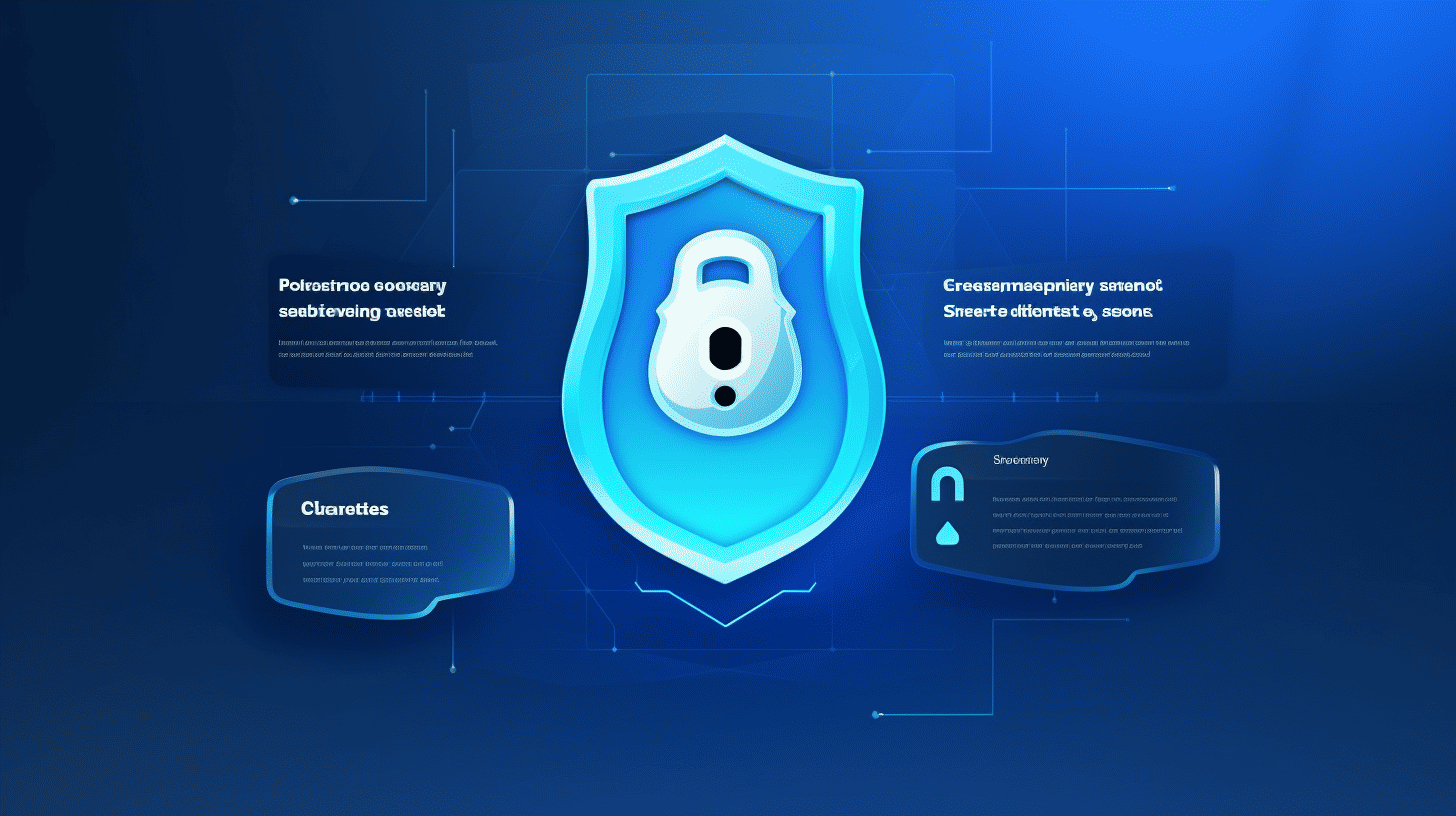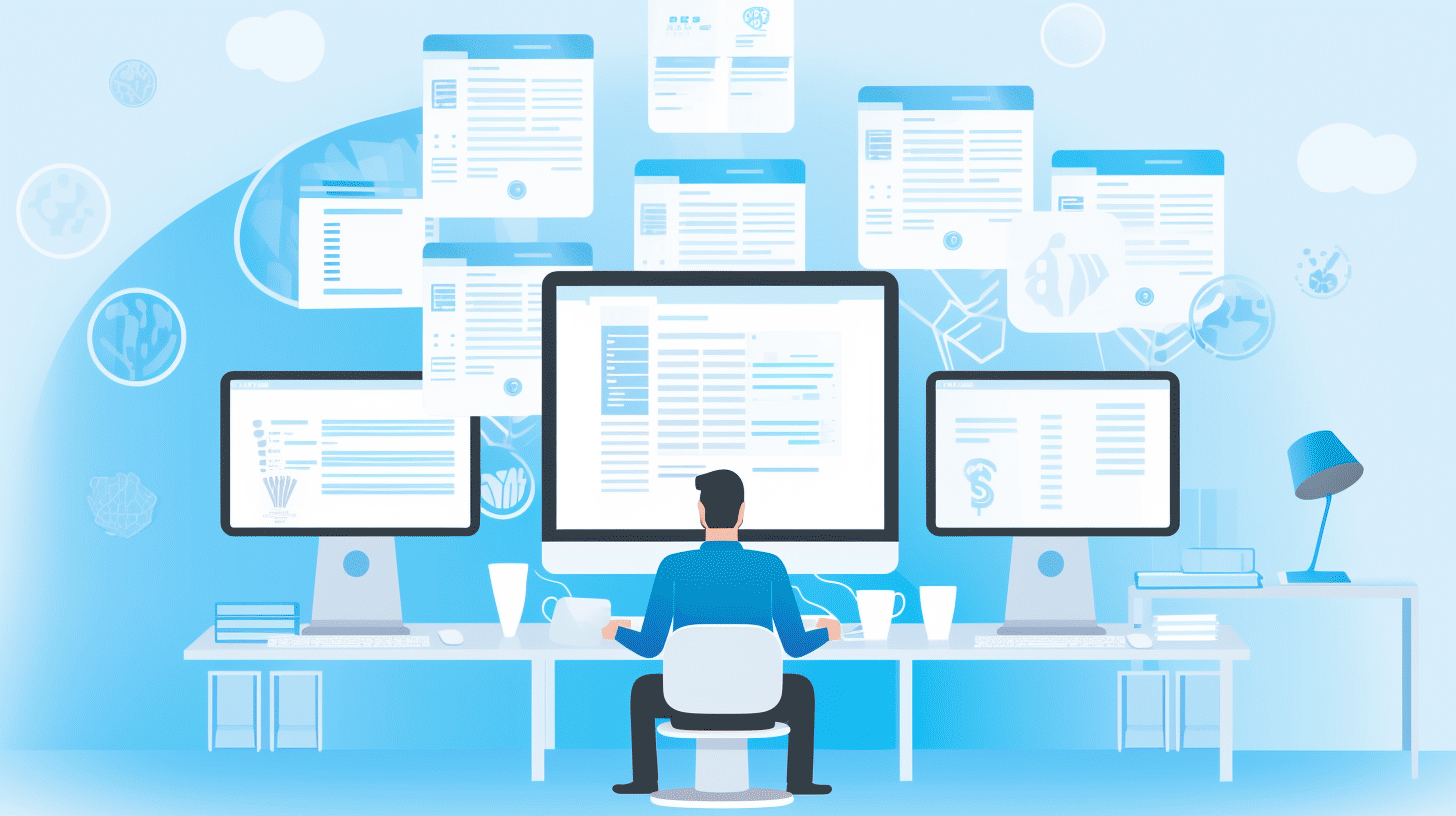In today’s digital age, having a secure and reliable website is paramount for businesses and individuals alike. With cyber threats becoming increasingly sophisticated, it is crucial to employ robust security measures to protect sensitive information and maintain the trust of your visitors. One powerful solution that has gained significant traction in recent years is Headless WordPress. By decoupling the frontend and backend of your website, Headless WordPress offers numerous benefits, including enhanced security and reliable website performance. In this article, we will explore the advantages, popularity, important factors to consider, extensibility, and limitations of Headless WordPress, as well as how it can help ensure website security and reliability. So buckle up, and let’s dive into the exciting world of Headless WordPress!
Benefits of Headless WordPress
Headless WordPress offers a range of benefits that can greatly enhance your website’s security and performance. By separating the front-end and back-end, Headless WordPress provides an extra layer of security and reduces the risk of security breaches. Let’s take a closer look at the advantages it brings:
Enhanced Website Security
With Headless WordPress, you can tightly protect the administrative and data-holding areas of your website, ensuring better security. By decoupling the front-end from the back-end, you reduce the potential attack surface, making it more difficult for malicious actors to exploit vulnerabilities. This separation also limits the impact of any successful attacks, as the attackers won’t have full access to your entire system.
To further bolster security, you can leverage secure APIs and plugins like “JWT Authentication for WP REST API.” These tools allow you to establish strict access controls and enforce secure communication between your front-end and back-end layers. By implementing these measures, you can build a robust security framework that safeguards your website and user data.
Reliable Website Performance
In addition to enhanced security, Headless WordPress offers excellent website performance. By decoupling the front-end from the back-end, your website can achieve 100% uptime, meaning it remains accessible to your users even when maintenance or updates are being performed on the back-end. This ensures a seamless browsing experience for your visitors, enhancing their satisfaction and engagement.
Another advantage of Headless WordPress is its ability to excel in SSL implementation. SSL (Secure Sockets Layer) is crucial for encrypting data transmitted between the server and the user’s device, ensuring secure communication. With Headless WordPress, you have full control over SSL implementation, allowing you to prioritize your website’s security and protect sensitive user information.
With these benefits in mind, it’s clear that Headless WordPress is a powerful solution for enhancing both the security and performance of your website. By leveraging its capabilities, you can provide a safe and reliable experience for your users while enjoying the flexibility and scalability that Headless WordPress offers.
Why Use Headless WordPress to explore more about the advantages of adopting this innovative approach to web development.
Popularity and Adoption
Headless WordPress has gained significant popularity in recent years, attracting a growing number of enterprise organizations. Its benefits and versatility have propelled it into the spotlight, making it a trendsetter in website management. Let’s delve into some of the reasons why headless WordPress has become such a widely adopted technology.
Enterprise Adoption
According to recent research, 64% of enterprise organizations have already embraced headless WordPress[1]. This statistic alone highlights the extent of its popularity and demonstrates the trust that businesses have in this approach.
One of the primary reasons for this widespread adoption is the flexibility and scalability that headless WordPress offers. By decoupling the backend and frontend, organizations have the freedom to experiment with different technologies and frameworks. This decoupling allows for a more modular and agile development process.
Improved Performance and Speed
Another significant advantage of headless WordPress is the noticeable improvement in website performance and speed. Traditional WordPress websites often suffer from performance issues due to the coupling of backend functionalities and frontend rendering. With headless WordPress, this bottleneck is eliminated, resulting in a faster and more efficient user experience.
By utilizing static site generators in combination with headless WordPress, websites can be rendered as static HTML files. These files can then be served to users directly from a Content Delivery Network (CDN), reducing server response times and increasing overall speed. This speed optimization has a direct impact on user satisfaction and can translate into better conversion rates for businesses.
Reduced Content Risk
One of the critical concerns for any website owner is the security and integrity of their content. Headless WordPress, when used in conjunction with static site generators, significantly reduces the risk of content-related cyberattacks.
Since static sites generated from headless WordPress lack server-side processing and database connections, they are inherently less vulnerable to certain types of attacks. By removing the complexity and potential vulnerabilities associated with backend interactions, headless WordPress minimizes the attack surface and strengthens the overall security posture of the website.
In conclusion, the increasing popularity of headless WordPress can be attributed to its ability to provide enterprise organizations with flexibility, improved performance, and reduced content risk. With these advantages, it is no wonder that headless WordPress has become a dominant force in website management.
Want to learn more about the trends in headless WordPress? Check out this Headless WordPress Trends article.
[1]: Source – Headless WordPress Trends
Factors to Consider
When considering implementing a headless WordPress setup, there are several factors that you should take into account. From maintenance and security costs to security best practices and choosing the right hosting provider, these considerations will help ensure a successful and secure headless WordPress website.
Maintenance and Security Costs
Using headless WordPress adds additional costs in terms of maintenance and security compared to traditional WordPress sites. While the benefits of headless WordPress are numerous, it’s essential to understand the potential expenses that come along with it. Some factors to consider include:
- Regular updates: With a headless setup, you’ll need to stay on top of updates for both the front-end and back-end systems. This includes updating WordPress core, plugins, and themes, as well as any additional frameworks or technologies used in your front-end development.
- Testing and compatibility: Headless WordPress often involves using various plugins and technologies to connect the front-end and back-end systems. This can lead to compatibility issues that need to be addressed through thorough testing and troubleshooting.
- Developer expertise: Implementing and maintaining a headless WordPress site may require a higher level of technical expertise compared to a traditional WordPress setup. It’s important to have skilled developers or a dedicated development team who are proficient in the technologies being used.
Security Best Practices
Following security best practices is crucial when utilizing the WordPress REST API with headless WordPress. As with any website, security should be a top priority to protect your data, user information, and overall site integrity. Here are some key security considerations for headless WordPress:
- Secure API endpoints: Ensure that your API endpoints are properly secured, and only accessible to authenticated users or trusted sources. Implementing authentication protocols like OAuth2 can help add an extra layer of security.
- Data validation and sanitization: Validate and sanitize all data inputs to prevent potential security vulnerabilities such as SQL injection or cross-site scripting (XSS) attacks.
- Role-based access control: Assign appropriate user roles and permissions to restrict access to administrative areas and sensitive data. Regularly review and update user access levels to maintain security.
- Regular security audits: Conduct periodic security audits to identify vulnerabilities and address them promptly. Stay up to date with the latest security patches and best practices recommended by WordPress and other security authorities.
Choosing a Hosting Provider
When it comes to hosting your headless WordPress site, selecting the right hosting provider is crucial. Look for a provider that offers robust security features and reliable performance. Some key features to consider include:
- Regular backups: Choose a hosting provider that offers automatic backups of your website’s data and content. This will help ensure that you have a recent backup in case of any unforeseen issues or data loss.
- Active security monitoring: Opt for a hosting provider that actively monitors your site for potential security threats and takes proactive measures to mitigate them. Look for features such as malware scanning, intrusion detection, and firewalls.
- Scalability and performance: Ensure that the hosting provider can handle the traffic and resource demands of your headless WordPress site. Look for options that offer scalability as your site grows and provides fast loading times for an optimal user experience.
By carefully considering these factors related to maintenance and security costs, security best practices, and choosing a hosting provider, you can set yourself up for success when implementing a headless WordPress setup. Remember, prioritizing security and investing in reliable infrastructure will help protect your website and provide a seamless user experience. For more detailed best practices on securing your headless CMS, check out Best Practices for Headless CMS.
Extensibility and Future-Proofing
When it comes to building digital experiences, extensibility and future-proofing are key considerations. Businesses and developers need scalable solutions that can adapt to changing technologies and user requirements. In this section, we will explore how headless WordPress, along with the use of modern web best practices and hosted solutions like Contentful, can enhance extensibility and future-proof your digital experiences. So, let’s dive in!
Improved Extensibility
One of the primary benefits of using a headless CMS, such as Contentful, with WordPress is the improved extensibility it offers. With a headless architecture, you have the freedom to separate the frontend from the backend, empowering you to use different technologies for each layer. This decoupling allows for greater flexibility in design, development, and scalability.
Here are some ways that headless WordPress can enhance extensibility:
- Flexibility in Frontend Development: With a headless approach, you are not limited to using PHP and WordPress themes. You can leverage modern frontend frameworks like React, Angular, or Vue.js to build interactive and dynamic user interfaces.
- Ease of Backend Customization: As the frontend and backend are decoupled, you have more freedom to customize the backend as per your specific requirements. You can add custom functionality, create custom APIs, or integrate with third-party services without affecting the frontend user experience.
- Scalability for Growing Needs: Headless WordPress allows for seamless scaling as your needs grow. Whether you are handling a small blog or a high-traffic e-commerce site, decoupling the frontend and backend enables you to scale each layer independently. This ensures that your digital experience remains performant under increasing demands.
Utilizing Modern Web Best Practices
By adopting a headless approach with WordPress and leveraging modern web best practices, you can stay ahead of the curve and future-proof your digital experiences. Here are a few best practices that can help you achieve this:
- API-First Approach: Adopting an API-first mentality ensures that your content is easily accessible and usable by multiple applications. WordPress’s robust REST API or GraphQL API (with plugins like WPGraphQL) provide powerful tools to expose your content and make it available for various frontend frameworks and platforms.
- Microservices Architecture: Breaking down your application into smaller, modular services allows for greater flexibility, scalability, and maintainability. By utilizing microservices, you can add or remove functionalities without impacting the entire system, making it easier to adapt to new technologies and evolving user needs.
- Continuous Integration and Deployment (CI/CD): Implementing CI/CD practices enables you to iteratively develop and deploy changes to your digital experiences. This approach allows for faster releases, better collaboration between teams, and easier rollbacks if issues arise.
Contentful as a Hosted Solution
When it comes to choosing a hosted solution for your headless WordPress site, Contentful is an excellent choice. It provides a robust and reliable platform for managing your content, empowering you to deliver exceptional digital experiences. With Contentful, you can:
- Centralize Content Management: Contentful acts as a central hub where you can create, edit, and manage your content. It provides a user-friendly interface, making it accessible to non-technical users while offering powerful features for developers.
- Seamless Integration with WordPress: Contentful integrates seamlessly with WordPress, allowing you to leverage the strengths of both platforms. You can use WordPress as a powerful backend for content editing and management, while Contentful acts as the content delivery platform for your headless frontend.
- Scalability and Performance: Contentful offers a highly scalable infrastructure, allowing for consistent performance even under heavy traffic. With a global Content Delivery Network (CDN), your content can be delivered quickly to users worldwide.
So, whether you are building a small blog or a large enterprise website, investing in an extensible and future-proof architecture is essential. By adopting a headless WordPress approach, utilizing modern web best practices, and leveraging hosted solutions like Contentful, you can ensure that your digital experiences are flexible, scalable, and ready to adapt to the ever-changing digital landscape. 🚀
Considerations and Limitations
When considering the implementation of headless WordPress, there are a few important considerations and limitations to keep in mind. While headless WordPress offers numerous advantages, it may not be suitable for every situation. Let’s explore some factors to consider before diving into the world of headless WordPress.
Live Preview and WYSIWYG Editor
In some cases, headless WordPress may not be appropriate if live preview and WYSIWYG (What You See Is What You Get) editor functionalities are essential. These features allow content creators to see the final appearance of their content as they are editing it, making it easier to visualize the end result. However, with headless WordPress, since the frontend and backend are decoupled, the live preview and WYSIWYG editor may not be readily available.
Integration with Other Frontend Technologies
Headless WordPress can be a powerful tool when utilized in conjunction with other frontend technologies. For instance, developers can leverage the flexibility of headless WordPress and combine it with popular frameworks like React to create custom endpoints and build dynamic user interfaces. This allows for greater control and customization over the frontend of the website. Additionally, integrating headless WordPress with frontend technologies enables developers to take advantage of modern web development practices and tools.
Maintenance and Updates
Implementing headless WordPress requires maintenance and updates for both the frontend and backend systems. While headless WordPress can provide greater flexibility and scalability, it also means that you need to manage and maintain two separate systems. This includes keeping the WordPress backend up-to-date with security patches and ensuring compatibility with the chosen frontend technology. It’s essential to allocate resources and have a plan in place for ongoing maintenance to ensure the smooth operation of your headless WordPress website.
📝 Additional Information:
- In some cases, headless WordPress may not be appropriate if live preview and WYSIWYG editor functionalities are essential.
- Headless WordPress can be utilized with other frontend technologies like React to create custom endpoints.
- Implementing headless WordPress requires maintenance and updates for both the frontend and backend systems.
Before jumping into a headless WordPress implementation, it’s crucial to evaluate these considerations and limitations to determine if it aligns with your specific use case and ensures a successful implementation.
To learn more about how headless WordPress can be combined with Vue.js to create optimized websites, check out this Headless WordPress and Vue.js article.
Conclusion
In conclusion, adopting a headless WordPress approach for your website offers numerous benefits including enhanced security and reliable performance. By separating the frontend and backend of your site, you can mitigate security risks and ensure a smooth user experience.
Furthermore, the popularity and adoption of headless WordPress continue to grow, with more enterprises recognizing its potential for improved performance, speed, and reduced content risk.
However, it’s essential to carefully consider factors such as maintenance and security costs, security best practices, and choosing a hosting provider to ensure the success of your headless WordPress implementation.
Taking advantage of the extensibility and future-proofing capabilities of headless WordPress allows you to embrace modern web practices and leverage hosted solutions like Contentful.
While there are considerations and limitations to keep in mind, such as live preview and WYSIWYG editor functionality and integration with other frontend technologies, the overall benefits outweigh these challenges.
In summary, headless WordPress empowers you with greater flexibility, scalability, and control over your website, ensuring a secure and reliable digital presence. Consider adopting this approach and leverage the power of headless WordPress to elevate your online experiences.
Remember, if you’re looking for a premium managed WordPress cloud hosting platform that simplifies infrastructure and offers expert 24/7 problem-solving, Managed-WP™ is here for you. Visit our website at managed-wp.com to learn more about how we can help you succeed with your headless WordPress journey.
Frequently Asked Questions
- What is Headless WordPress?
Headless WordPress is an approach where the WordPress backend is decoupled from the frontend, allowing developers to use different technology stacks for each. With Headless WordPress, the CMS serves as a content repository and APIs are used to fetch and display the content on various platforms.
- Is Headless WordPress more secure than traditional WordPress?
Headless WordPress can provide enhanced security as it reduces the attack surface and eliminates the need for plugins and themes on the frontend. However, the overall security depends on the implementation, server setup, and other factors.
- How does Headless WordPress ensure website reliability?
Headless WordPress separates the frontend and backend, allowing developers to optimize each independently. This ensures better performance, scalability, and reliability as issues or updates on one side don’t affect the other.
- What are the benefits of using Headless WordPress?
Some benefits of using Headless WordPress include better performance, improved flexibility, easy content management, increased scalability, and the ability to use different technologies for frontend development.
- Does using Headless WordPress require advanced development skills?
Implementing Headless WordPress generally requires a higher level of development expertise, as it involves working with APIs, building custom frontend applications, and integrating different technologies. However, there are frameworks and tools available to simplify the process.



















